Ogdoad Of Hermopolis – Ancient Egyptian Concept Of Eternal And Primeval Forces
A. Sutherland - AncientPages.com - In Egyptian mythology, references to the Ogdoad appear in texts as early as the 25th Dynasty, known as the Nubian Dynasty or the Kushite Empire.
 Depiction of the Ogdoad with serpent and frog heads - Roman-era relief at the Hathor temple in Dendera. Image via wikipedia
Depiction of the Ogdoad with serpent and frog heads - Roman-era relief at the Hathor temple in Dendera. Image via wikipedia
Mentioned in the Coffin Texts of the Middle Kingdom (1975 BC to 1640 BC), the Ogdoad (in Greek - "the eightfold") was a very ancient Egyptian cosmological concept that embodied the four components of pre-creation (infinite time, darkness, the primeval waters, and the void).
The pantheon of the Ogdoad included eight deities (four pairs) worshiped in Hermopolis during the Old Kingdom period (27th to 22nd centuries).
The Ogdoad deities had their main cult center in Khmunu (‘Eight Town’ or ‘City of the Eight’), later known under its Hellenistic name, Hermopolis Magna. The center had also its Coptic name ‘shmun’ (means ‘eight’ in Middle Egypt) with which the god Thoth was also associated.
Thus, Nun and Naunet were primordial water in male and female form, while Huh (Heh) and Hauhet symbolized infinite space. On the other hand, Kek (Kuk) and Kauket had darkness as their domain, while Amun and Amaunet were identified with invisibility.
According to many versions of the Egyptian creation myths, the Ogdoad’s eight beings formed the first hill or the lotus flower or the cosmic egg from which the creator sun god emerged.
 From left to right) the goddess Hathor and six of the eight deities of the Ogdoad of Khmoun-Hermopolis Megale: Kek and Kauket, Naune and Nun.
From left to right) the goddess Hathor and six of the eight deities of the Ogdoad of Khmoun-Hermopolis Megale: Kek and Kauket, Naune and Nun.
Thus, the beings were treated as “the fathers and mothers” of the creator, but not the same creator. Alternatively, creator gods such as Amun, Ptah, or Thoth, who were viewed as calling the eight into being. The creator was then “his” own ancestor, the “father of the fathers and mothers.”
The Hermopolitan concept of the Ogdoad pantheon was widely acknowledged throughout Egypt, and Medinet Habu, located in western Thebes was regarded as the mortuary cult-place of the “deceased” Ogdoad’s eight primordial deities. Then, the Graeco-Roman Period, started with the conquest of Egypt by Alexander the Great in 332 BC and the kings of Egypt traditionally came to Medinet Habu every ten years to honor the Ogdoad.
As we mentioned earlier, the Egyptian creation myth developed in late and Ptolemaic times was based heavily on that of Hermopolis, with references to the Ogdoad appearing in texts as early as the 25th Dynasty.
“The most important change in the Theban versions was the elevation of Amun-Ra, the supreme god of Thebes, as primordial creator identified with Nun, “the great one who came into being at the beginning,” he is said to be the progenitor of these eight male and female deities, “who built the builders and fashioned the fashioners,” and thus also the father of Ra, the sun god..." (Brett McClain, Cosmogony (Late Ptolemaic and Roman Periods).
Updated on March 4, 2024
Written by - A. Sutherland - AncientPages.com Senior Staff Writer
Copyright © AncientPages.com All rights reserved. This material may not be published, broadcast, rewritten or redistributed in whole or part without the express written permission of AncientPages.com
Expand for referencesReferences:
Hart, George (2005), Routledge Dictionary Of Egyptian Gods And Goddesses
McClain B, Cosmogony (Late Ptolemaic and Roman Periods),
Pinch G. Handbook of Egyptian Mythology
More From Ancient Pages
-
 Mystery Of Unique 2,100-Year-Old Human Clay Head With A Ram’s Skull Inside
Archaeology | Apr 18, 2020
Mystery Of Unique 2,100-Year-Old Human Clay Head With A Ram’s Skull Inside
Archaeology | Apr 18, 2020 -
 Carved Stone Depicting Mystery Horseman Unearthed At Roman Vindolanda, Hadrian’s Wall
Archaeology | Jul 1, 2021
Carved Stone Depicting Mystery Horseman Unearthed At Roman Vindolanda, Hadrian’s Wall
Archaeology | Jul 1, 2021 -
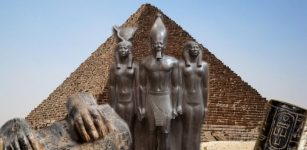 Pharaoh Menkaure – Egyptian Ruler Who Tried To Outsmart Fate
Featured Stories | Nov 18, 2020
Pharaoh Menkaure – Egyptian Ruler Who Tried To Outsmart Fate
Featured Stories | Nov 18, 2020 -
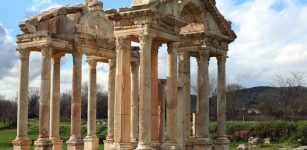 What Can Archaeology Tells Us About Climate Change?
Archaeology | Aug 9, 2021
What Can Archaeology Tells Us About Climate Change?
Archaeology | Aug 9, 2021 -
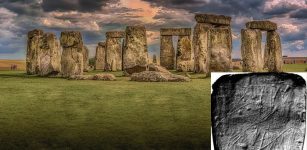 New Light On Prehistoric Chalk Plaques From Stonehenge Using Innovative Technology
Archaeology | Nov 3, 2021
New Light On Prehistoric Chalk Plaques From Stonehenge Using Innovative Technology
Archaeology | Nov 3, 2021 -
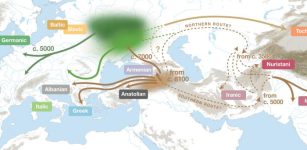 New Insights Into The Dawn Of The Indo-European Languages
Linguistic Discoveries | Jul 27, 2023
New Insights Into The Dawn Of The Indo-European Languages
Linguistic Discoveries | Jul 27, 2023 -
 Bizarre Case Of A Mysterious Dark Figure’s Inhuman Behavior At Cemeteries – No One Understood What Happened
Featured Stories | Dec 1, 2024
Bizarre Case Of A Mysterious Dark Figure’s Inhuman Behavior At Cemeteries – No One Understood What Happened
Featured Stories | Dec 1, 2024 -
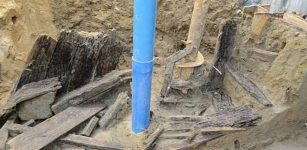 Archaeologists Discover A Secret Escape Tunnel In Copenhagen, Denmark
Archaeology | May 5, 2020
Archaeologists Discover A Secret Escape Tunnel In Copenhagen, Denmark
Archaeology | May 5, 2020 -
 Rio Tinto Bosses Quit Over Destruction Of One Of The Earliest Aboriginal Sites
News | Sep 12, 2020
Rio Tinto Bosses Quit Over Destruction Of One Of The Earliest Aboriginal Sites
News | Sep 12, 2020 -
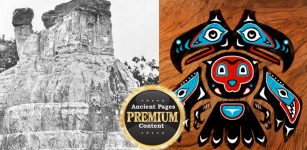 Ancient Mysteries Of Wisconsin – Great Forgotten Prehistoric Events Shed New Light On History Of North America
Ancient Mysteries | Jan 11, 2019
Ancient Mysteries Of Wisconsin – Great Forgotten Prehistoric Events Shed New Light On History Of North America
Ancient Mysteries | Jan 11, 2019 -
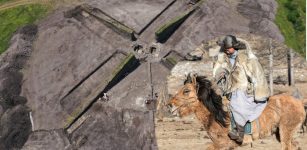 Ancient Burials Of World’s First Horse Riders Found Near The Black Sea
Archaeology | Mar 3, 2023
Ancient Burials Of World’s First Horse Riders Found Near The Black Sea
Archaeology | Mar 3, 2023 -
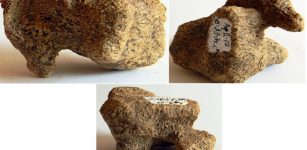 12,000 Years Ago Siberian People Possessed Technique To Soften Ivory And Create Toys Or Art Items
Ancient Technology | Jan 6, 2021
12,000 Years Ago Siberian People Possessed Technique To Soften Ivory And Create Toys Or Art Items
Ancient Technology | Jan 6, 2021 -
 Remains Of Colonnaded Hall Of 26th Dynasty Found At Ancient Buto Temple, Northern Nile Delta
Archaeology | Nov 18, 2022
Remains Of Colonnaded Hall Of 26th Dynasty Found At Ancient Buto Temple, Northern Nile Delta
Archaeology | Nov 18, 2022 -
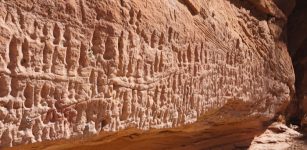 Story Behind A Huge Mysterious Ancient Rock Art Site In Central Queensland Revealed By Scientists
Archaeology | Sep 21, 2022
Story Behind A Huge Mysterious Ancient Rock Art Site In Central Queensland Revealed By Scientists
Archaeology | Sep 21, 2022 -
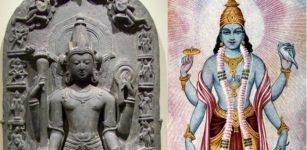 Vishnu: Supreme, Universal Hindu God Whose Avatars Reach Nations, Cultures And Races
Featured Stories | Jul 25, 2019
Vishnu: Supreme, Universal Hindu God Whose Avatars Reach Nations, Cultures And Races
Featured Stories | Jul 25, 2019 -
 How Extensively Did Early Farmers Utilize Europe’s Rich Forests For Raising Their Livestock?
Archaeology | Nov 13, 2024
How Extensively Did Early Farmers Utilize Europe’s Rich Forests For Raising Their Livestock?
Archaeology | Nov 13, 2024 -
 What Is The Curse Of The Ninth Symphony?
Ancient History Facts | Aug 3, 2018
What Is The Curse Of The Ninth Symphony?
Ancient History Facts | Aug 3, 2018 -
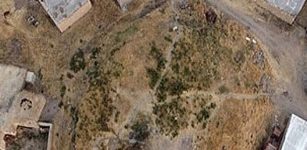 Clay-Jar Tombs With Child Corpses – Unearthed In Northwest Iran
Archaeology | Jun 28, 2020
Clay-Jar Tombs With Child Corpses – Unearthed In Northwest Iran
Archaeology | Jun 28, 2020 -
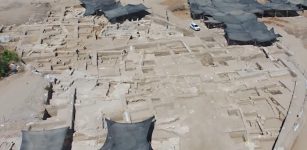 World’s Largest Wine Factory From The Byzantine Period Unearthed In Yavne
Archaeology | Oct 14, 2021
World’s Largest Wine Factory From The Byzantine Period Unearthed In Yavne
Archaeology | Oct 14, 2021 -
 Incredibly Well-Preserved 1,000-Year-Old Wooden Ladder Discovered In The UK
Archaeology | Apr 30, 2022
Incredibly Well-Preserved 1,000-Year-Old Wooden Ladder Discovered In The UK
Archaeology | Apr 30, 2022
